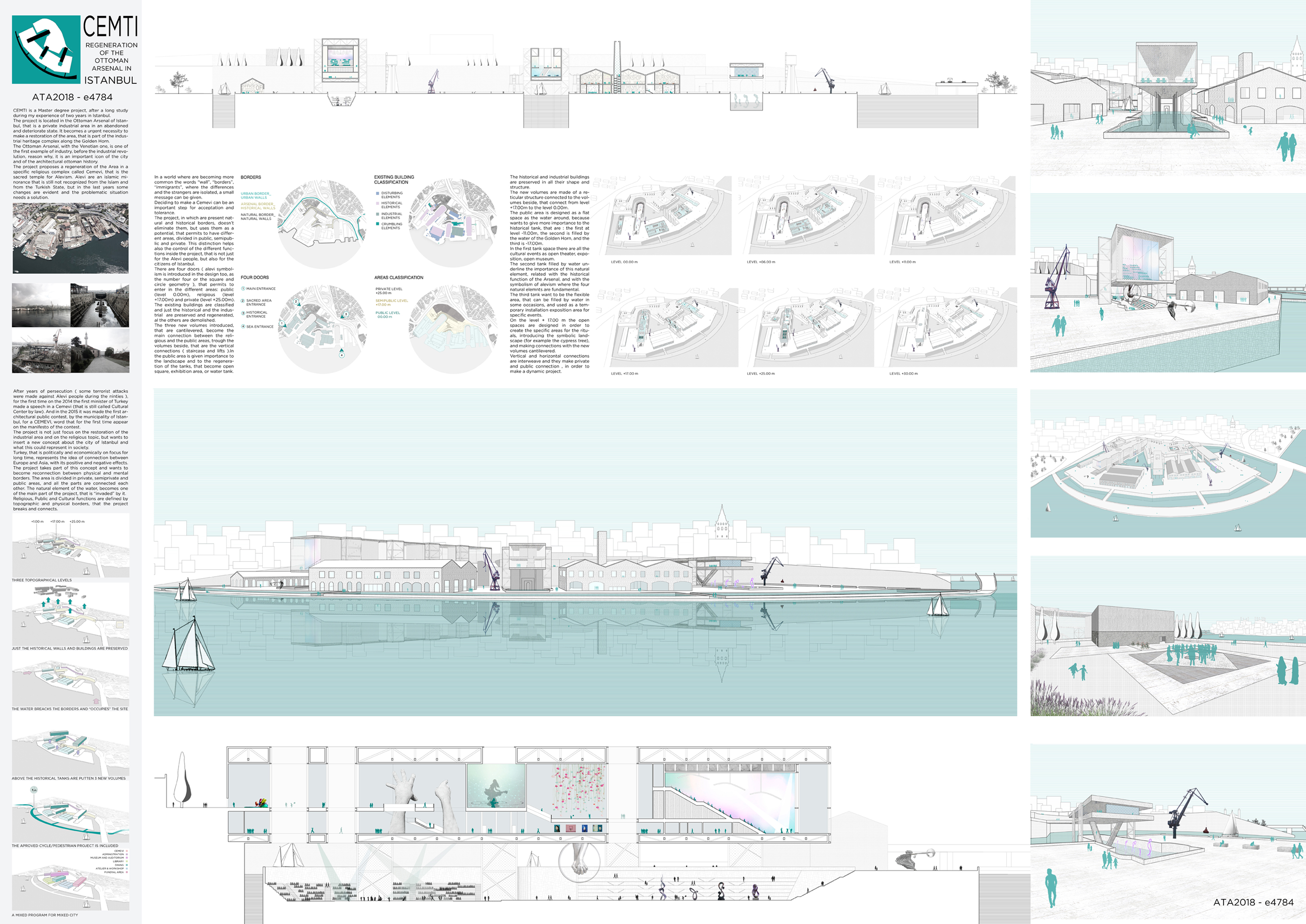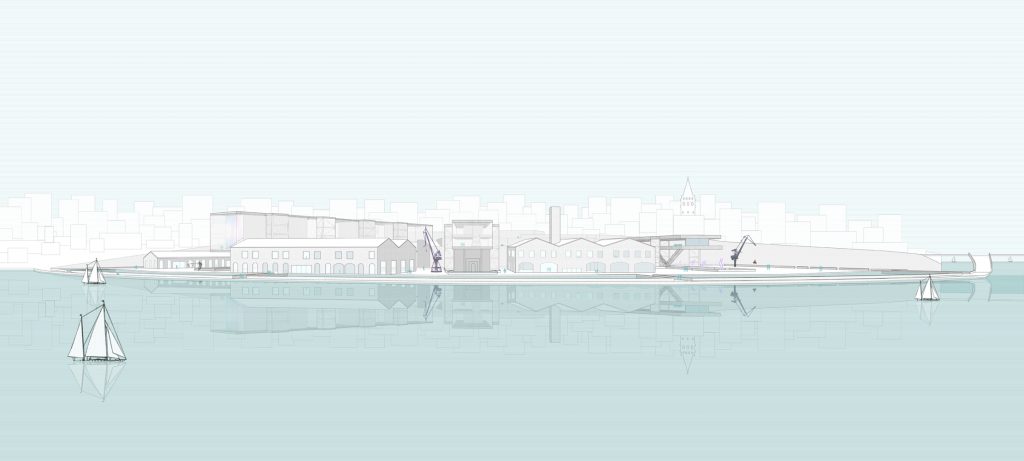CEMTI is a Master degree project, after a long study during my experience of two years in Istanbul.
The project is located in the Ottoman Arsenal of Istanbul, that is a private industrial area in an abandoned and deteriorate state. It becomes a urgent necessity to make a restoration of the area, that is part of the industrial heritage complex along the Golden Horn.
The Ottoman Arsenal, with the Venetian one, is one of the first example of industry, before the industrial revolution, reason why, it is an important icon of the city and of the architectural ottoman history.
The project proposes a regeneration of the Area in areligious complex called Cemevi, that is the sacred temple for Alevism, an islamic minorance not recognize yet.
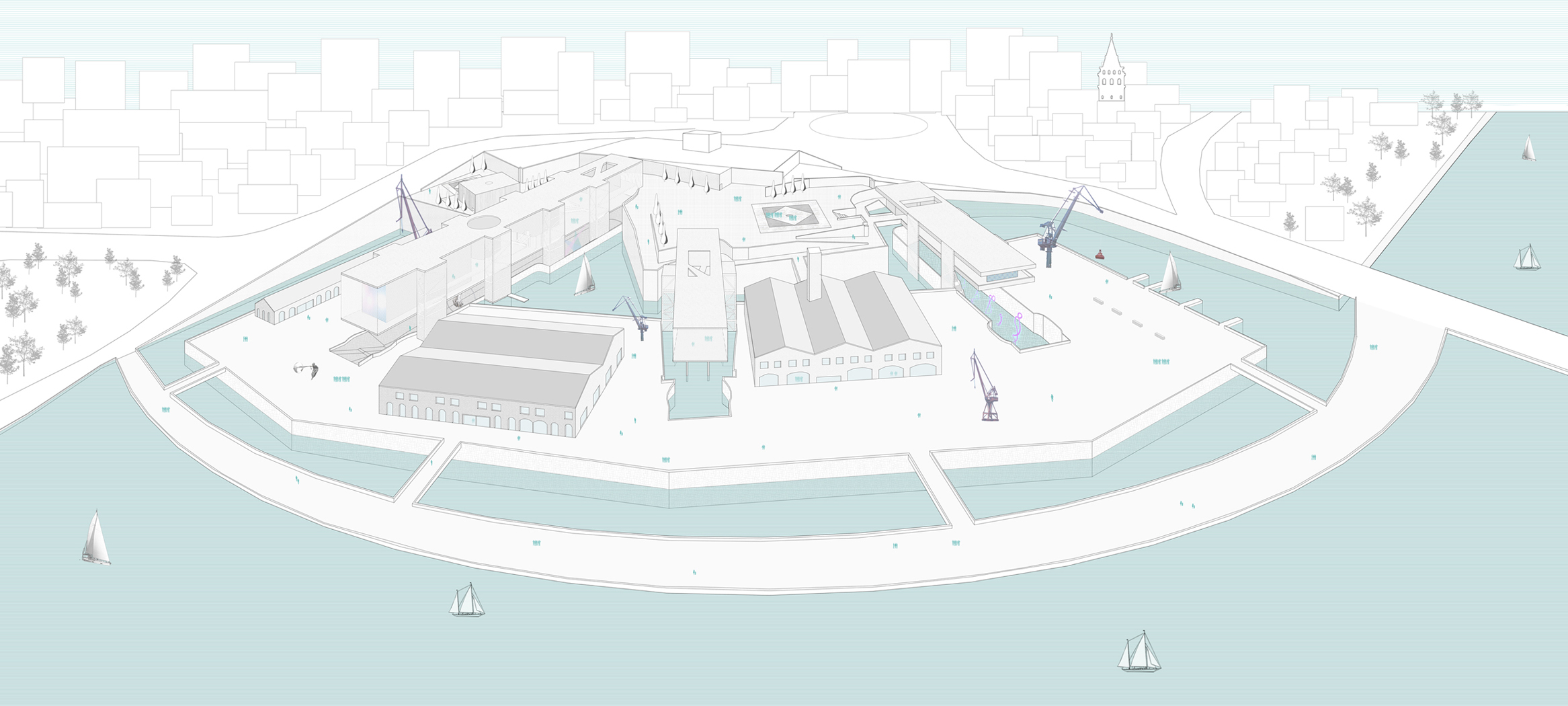
After years of persecution ( some terrorist attacks were made against Alevi people during the ninties ), for the first time on the 2014 the first minister of Turkey made a speech in a Cemevi (that is still called Cultural Center by law). And in the 2015 it was made the first architectural public contest, by the municipality of Istanbul, for a CEMEVI, word that for the first time appear on the manifesto of the contest. The project is not just focus on the restoration of the industrial area and on the religious topic, but wants to insert a new concept about the city of Istanbul and what this could represent in society. Turkey, that is politically and economically on focus for long time, represents the idea of connection between Europe and Asia, with its positive and negative effects. The project takes part of this concept and wants to become reconnection between physical and mental borders. The area is divided in private, semiprivate and public areas, and all the parts are connected each other. The natural element of the water, becomes one of the main part of the project, that is “invaded” by it. Religious, Public and Cultural functions are defined by topographic and physical borders, that the project breaks and connects.
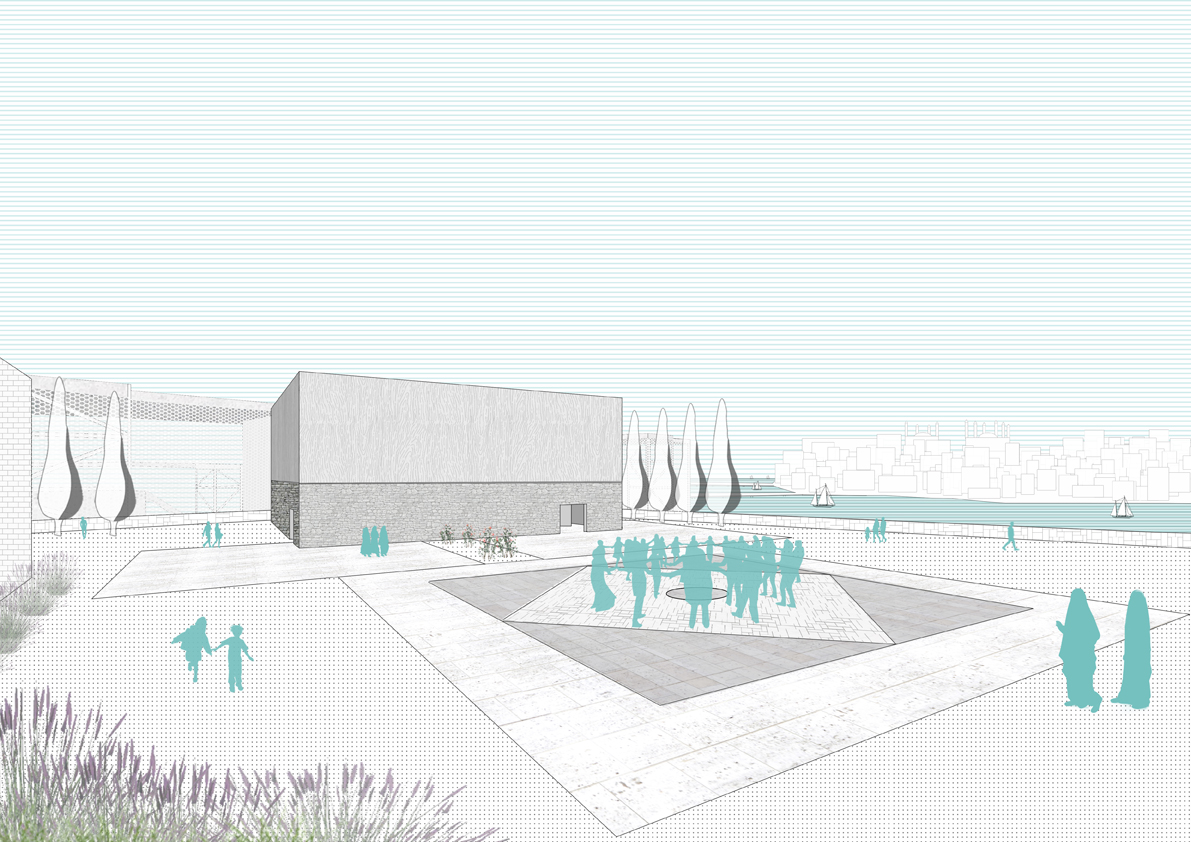
In a world where are becoming more common the words “wall”, “borders”, “immigrants”, where the differences and the strangers are isolated, a small message can be given. Deciding to make a Cemevi can be an important step for acceptation and tolerance. The project, in which are present natural and historical borders, doesn’t eliminate them, but uses them as a potential, that permits to have different areas, divided in public, semipublic and private. This distinction helps also the control of the different functions inside the project, that is not just for the Alevi people, but also for the citizens of Istanbul. There are four doors ( alevi symbolism is introduced in the design too, as the number four or the square and circle geometry ), that permits to enter in the different areas: public (level 0.00m), religious (level +17.00m) and private (level +25.00m). The existing buildings are classified and just the historical and the industrial are preserved and regenerated, al the others are demolished. The three new volumes introduced, that are cantilevered, become the main connection between the religious and the public areas, trough the volumes beside, that are the vertical connections ( staircase and lifts ).In the public area is given importance to the landscape and to the regeneration of the tanks, that become open square, exibition area, or water tank.
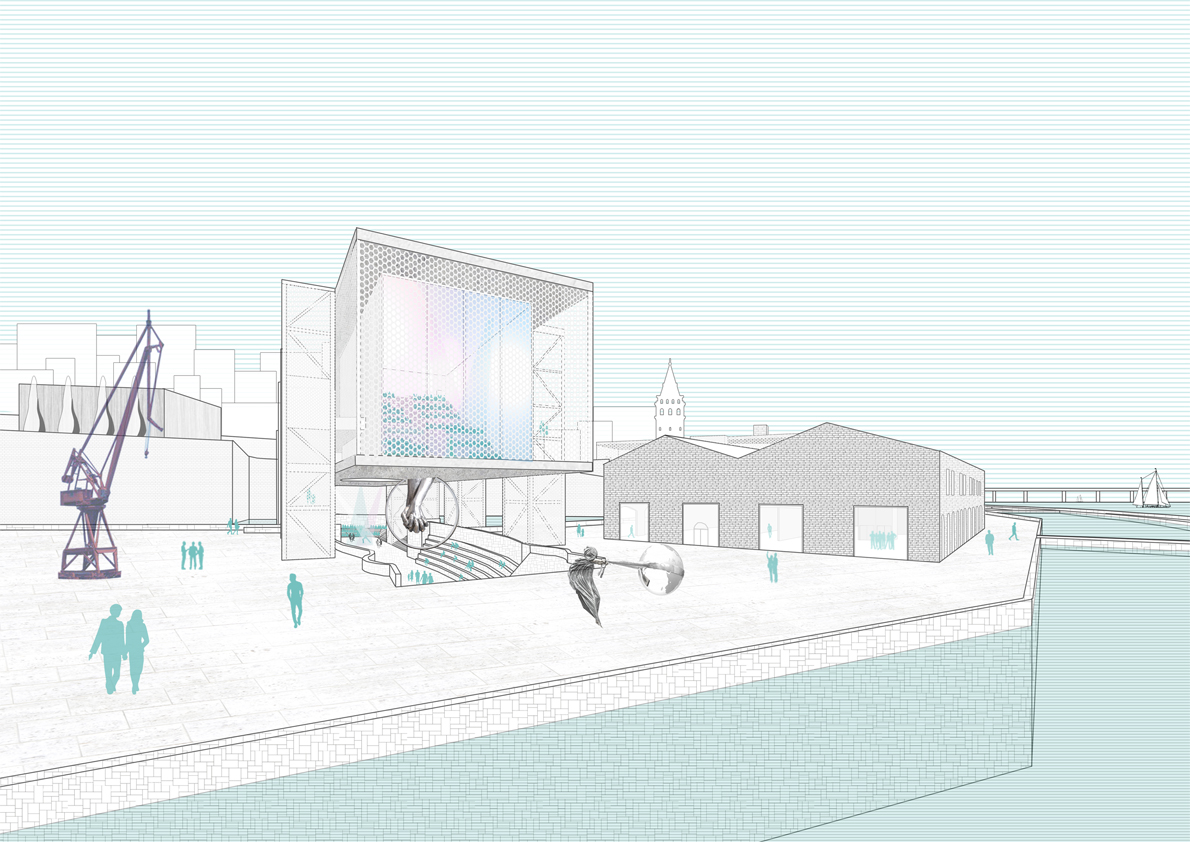
The Board:
